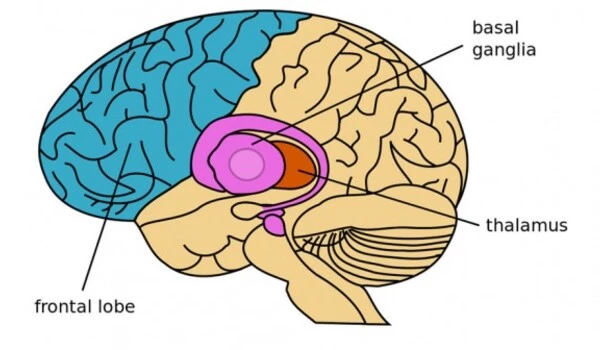The thalamus is a critical component in the brain that regulates several activities, including sensory perception, consciousness, and the adult brain’s flexibility. It is widely assumed that the adult brain’s adaptation occurs mostly in the cortex. The thalamus, a relay station for receiving motor and sensory information, plays a surprisingly large part in this process, according to a recent study from the Netherlands Institute for Neuroscience. “This could be an interesting starting point for various therapies,” Christiaan Levelt speculates.
Learning new things necessitates a massive mental capacity. Plasticity refers to our brain’s adaptation as a result of new experiences. There are important phases in human development when our brain networks exhibit a lot of plasticity. However, the adult brain may also adapt. It is unclear where this plasticity occurs in the adult brain.
Yi Qin and his colleagues researched the visual system of mice under the guidance of Christiaan Levelt to acquire further insight into this subject. Because of its ease of manipulation, this is a common model for researching plasticity. The retina sends visual information to the thalamus. The processed information is subsequently transmitted to the visual cortex by this brain nucleus, and vice versa.
A mouse experiment can plainly demonstrate how well the adult brain can adapt. When one of the mouse’s eyes is occluded for a few days, the visual cortex begins to respond less effectively to the closed eye and more efficiently to the open eye. For a long time, it has been unclear how this is precisely regulated. However, these new findings highlight an essential player: the thalamus.
Plasticity is important in many processes. Although we are now focusing on sensory plasticity (vision), plasticity is equally important for memory and other processes. These new insights could be useful in understanding learning impairments, for example. It is probable that the thalamus, rather than the cortex, is the source of these issues.
Christiaan Levelt
New Perspective
“Five years ago, we discovered that the thalamus plays a critical role in the plasticity of the visual cortex during critical periods of development,” says Christiaan Levelt. This has altered our understanding of how the entire system operates. We all assumed that the visual cortex was in charge of this process, but that was not the case.”
“We found out by removing a very specific component, the GABA-alpha 1 subunit, in the thalamus of mice during their critical period for vision. This component is responsible for inhibiting the thalamus, so its removal resulted in reduced inhibition. When we closed one eye in these mice, the shift in responses no longer occurred. Because the adult brain uses different plasticity mechanisms than the developing brain, an important question was whether adaptation in the adult visual system also involved the thalamus.”
Yi Qin: “In the current study, we performed the same experiment in adult mice and observed similar results. We observed that plasticity also took place in the adult thalamus, but disappeared when we removed the alpha-1 subunit. Consequently, there was no longer a shift in the cortex either. Since we know that the visual cortex also sends information back to the thalamus through a feedback mechanism, we were curious if the visual cortex also plays a role in the plasticity of the thalamus.”
“We looked into this by flipping the experiment and turning off the visual cortex. So, what occurs to the thalamic response shift? We found no difference in adult animals: the shift remained. However, when we shut off the visual cortex in rats during their critical phase, the shift in the thalamus returned. Thus, plasticity in the thalamus and cortex influence each other significantly more at a young age, whereas in the adult brain, the thalamus is especially crucial for plasticity in the cortex but not the other way around.”

Involved in many processes
While the thalamus itself does not directly regulate adaptability, it is an integral part of the brain’s neural circuitry that contributes to adaptive processes. The thalamus acts as a relay station for sensory information, receiving input from various sensory organs (such as the eyes, ears, and skin) and transmitting this information to different regions of the cerebral cortex. This relay of sensory information is essential for cognitive processes and learning.
“Plasticity is important in many processes,” Levelt explains. Although we are now focusing on sensory plasticity (vision), plasticity is equally important for memory and other processes. These new insights could be useful in understanding learning impairments, for example. It is probable that the thalamus, rather than the cortex, is the source of these issues. As a result, a new method is required. When it comes to therapies and the pathophysiology of these diseases, we should include the thalamus as well as the cortex. “This is a significant new interpretation.”
“Even in the case of lazy eye, it is assumed to be a cortex problem, but it could also involve the thalamus,” Qin says. We begin testing for the presence of lazy eye at an early age in Europe. During the critical period, this problem can be addressed by temporarily patching the ‘good eye,’ which improves the connections to the weaker eye. In the United States, for example, this is not routinely tested at an early age, resulting in a greater number of people having a lazy eye throughout adulthood.”
“Because the critical period for them has already passed, treating these individuals becomes more difficult. Our findings suggest that we should go beyond the cortex for direction on a new therapeutic strategy.”
















